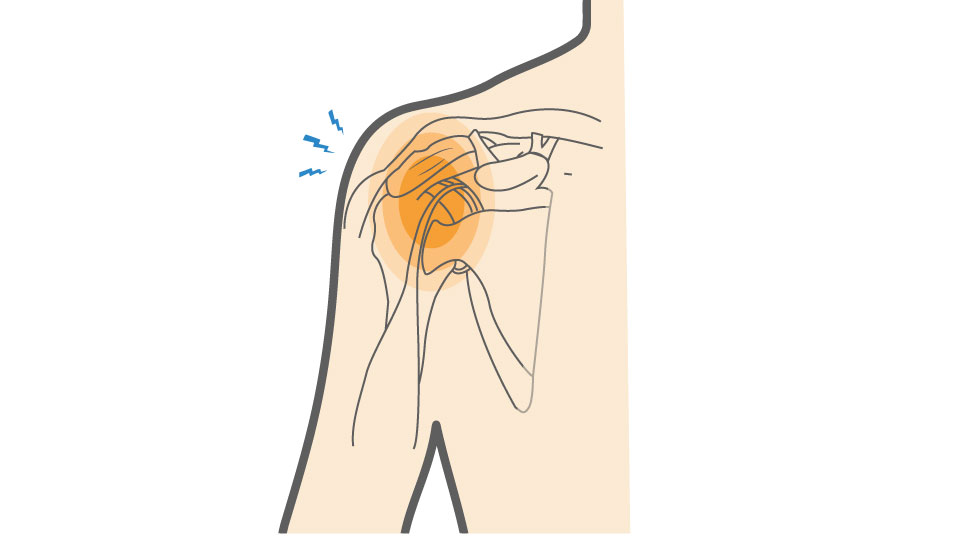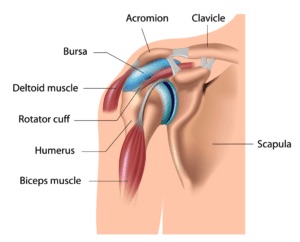Rotator cuff bursitis is the name given to a condition characterized by inflammation of the bursa (a small sac filled with fluid) in the shoulder. In the shoulder, the bursa is located between the rotator cuff and the tip of the shoulder blade (acromion). The bursa helps the structures of the shoulder to move and ‘glide’ around each other without injury. For example, if the humerus (arm bone) were allowed to rub against the rotator cuff tendons without a cushion, eventually, it would wear a hole, much like when you wear a hole through your socks.



